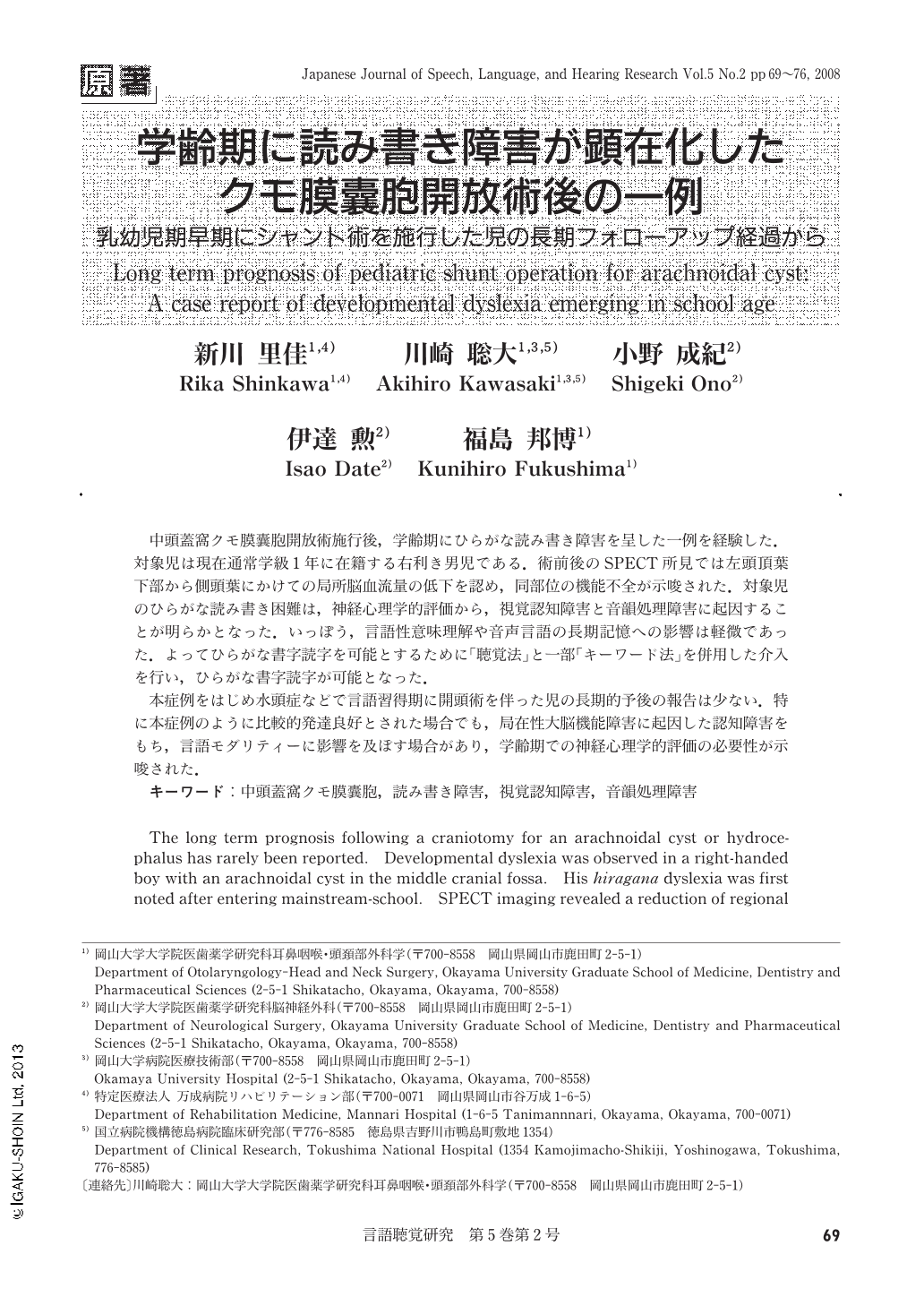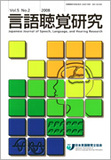Japanese
English
- 有料閲覧
- Abstract 文献概要
- 1ページ目 Look Inside
- 参考文献 Reference
中頭蓋窩クモ膜囊胞開放術施行後,学齢期にひらがな読み書き障害を呈した一例を経験した.対象児は現在通常学級1年に在籍する右利き男児である.術前後のSPECT所見では左頭頂葉下部から側頭葉にかけての局所脳血流量の低下を認め,同部位の機能不全が示唆された.対象児のひらがな読み書き困難は,神経心理学的評価から,視覚認知障害と音韻処理障害に起因することが明らかとなった.いっぽう,言語性意味理解や音声言語の長期記憶への影響は軽微であった.よってひらがな書字読字を可能とするために「聴覚法」と一部「キーワード法」を併用した介入を行い,ひらがな書字読字が可能となった.
本症例をはじめ水頭症などで言語習得期に開頭術を伴った児の長期的予後の報告は少ない.特に本症例のように比較的発達良好とされた場合でも,局在性大脳機能障害に起因した認知障害をもち,言語モダリティーに影響を及ぼす場合があり,学齢期での神経心理学的評価の必要性が示唆された.
The long term prognosis following a craniotomy for an arachnoidal cyst or hydrocephalus has rarely been reported. Developmental dyslexia was observed in a right-handed boy with an arachnoidal cyst in the middle cranial fossa. His hiragana dyslexia was first noted after entering mainstream-school. SPECT imaging revealed a reduction of regional cerebral blood flow (rCBF) in the left parietal and temporal lobes even after surgical removal of the arachnoidal cyst. It was suggested that the hypofunction of these regions caused his visual-cognitive and phonological-processing dysfunctions. Cases with preferable development after craniotomy have been sometimes neglected from postoperative follow up. However, it must be noted that cognitive dysfunction due to localized cerebral damage can cause less severe disabilities, including learning difficulties, and neuropsychological evaluations for a patient at school age may play an important role for the follow-up of these patients.

Copyright © 2008, Japanese Association of Speech-Language-Hearing Therapists. All rights reserved.


